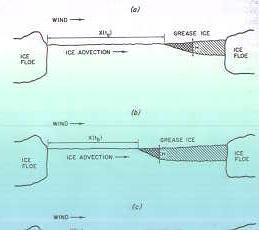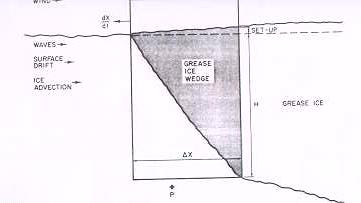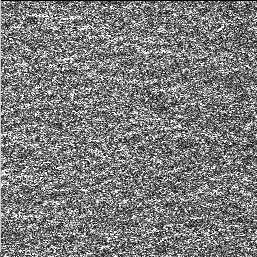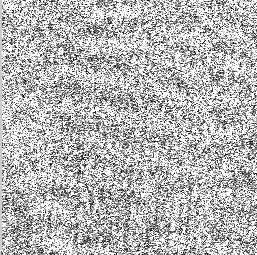|
|
|
|
|
Wave-Ice interactions in open leads have a significant effect on climate. As mentioned, waves and wind herd ice in the general direction in which they are moving. If this occurs in a lead in the ice, this has the effect of maintaining the lead. When ice is forming, the air is cold and so there will be a large amount of heat transfer from the ocean (warm) to the cold atmosphere. The longer the lead remains open the more heat is transferred. Open leads are a significant source of heat loss in the polar oceans1. The schematic drawings below illustrate the basic ideas behind ice growth in leads. |
 
Image Source: Bauer and Martin: Model of Grease Ice Growth1 Figures illustrating the growth of ice in leads. |
|
|
| As mentioned earlier, sea ice damps and attenuates short wavelength surface gravity waves*. This damping is not limited simply to surface gravity waves. Sea Ice also damps capillary waves**. Capillary waves are a major factor in the ability of the wind to exert a viscous drage force on water. When sea ice damps these very short wavelength waves it limits the ability of the wind to act on the water. It is this factor that leads some to believe that the action of the waves in forming grease and pancake ice is as important a factor in some processes of ice formation as the action of the wind4. |
|
|
| As mentioned several time before, sea ice damps short wavelengths.This has important implications for remote sensing and thus shipping. Short surface waves correspond to the bragg scattering length for synthetic aperture radar (SAR). By damping these waves, frazil, grease and pancake ice appear black in SAR images. The images below are SAR images showing in the first image (the largest image) waves in the MIZ near Greenland. The second image shows waves in the an area covered by ice forms such as those encountered in the MIZ (frazil, grease and pancake). The third image (bottom image) shows waves in open water. These three images illustrate well the effect that sea ice in the MIZ has on SAR imagery. |
  
SAR images of waves in sea ice. |
|
*Waves in which the restoring force is gravity. |
| **Waves in which the restoring force is the surface tension of water. |
|
|
|
Back |
| Last Modified: 12/12/2001 |